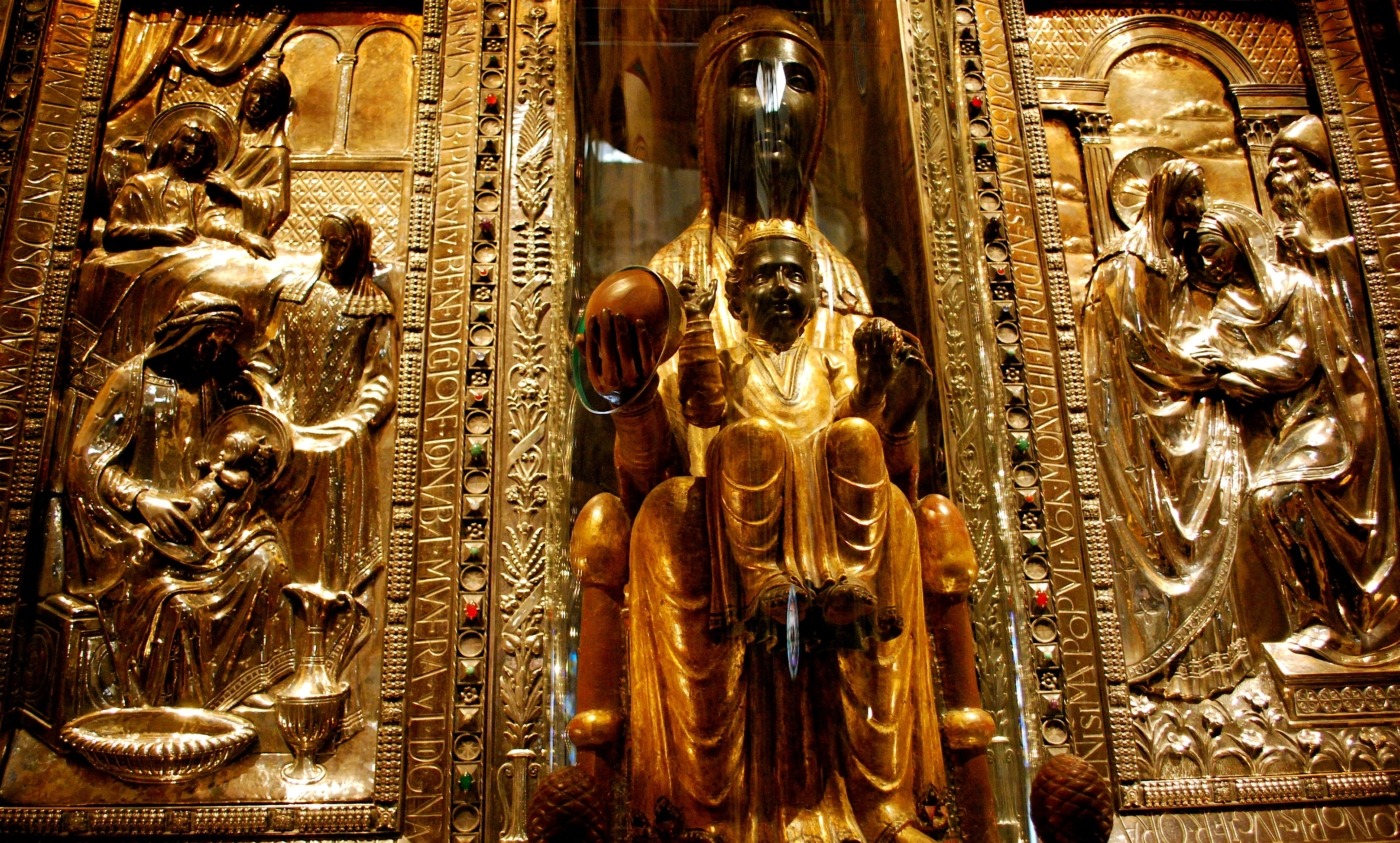The emergence of the Black Madonna
The politicisation of art has ushered in a new wave of contemporary artists revaluating the depiction of religious figures in art and film. One such image is the Madonna who, although hailing from what would now be called Palestine, has long been depicted as a fair, blue-eyed blonde. Now, with the art of Theaster Gates and Chris Ofili’s The Holy Virgin Mary (1996) and films such as Children of Men (2006), a new, darker-skinned image of Mary – the Black Madonna – is emerging.
While the idea of a Black Madonna is not new to the art world, existing where she is a mirror of the community and unintentionally provocative, her features are only now becoming more prominent in pop culture, or gaining a purposeful statement behind them. Much of the reasoning for this has to do with our understanding of the way history has been whitewashed and the need for people of colour to see themselves reflected positively.
The Black Madonna’s features are only now becoming more prominent in pop culture
Part of the reason for Mary’s continued misrepresentation is the audience that consumes the art. Imagine how a 16th century Italian audience would have reacted if Raphael had unveiled a black Sistine Madonna? It would be contradictory to paint the mother of Christ as non-white when the Bible is being used to justify the oppression and inferiority of people of colour. White art is consumed by all and any other art is rarely seen as palatable or relatable, so while there are some Black Madonnas in the world, they tend to be restricted to within their communities. This is not a bad thing, but it does not help to promote diversity or change established rules.
The bigger issues regarding the Madonna’s portrayal comes when we evaluate the reasons for the lack of women of colour in religious imagery. Mary’s most distinguishing characteristic is her virginity; she is the embodiment of innocence, a heavenly figure who is the mother of humanity’s savoiur. She exists in a space that is rarely occupied by women of colour in art. When we view how women of colour and black women specifically are depicted in art, two distinct roles come to mind: that of the mammy, an overweight woman whose purpose is to look after other people’s children; and that of the whore, an image resulting from the oversexualisation of non-white features, such as big lips, big breasts and big bums. This limited lens creates a morphed reality where people of colour are erased from their own stories in favour of what is seen as being more universal.
This limited lens creates a morphed reality where people of colour are erased from their own stories
And these stories have largely been told by white artists. It would be naive to state that only someone of a specific group can tell their own stories but, in this case, particularly when it comes to art that is personal or important to the creator, as religion is, it can perhaps be difficult for the artists to remove themselves from their work. Art in a major way reflects and impacts the way we view ourselves so although it does not excuse it, it is understandable that a white artist’s rendition of the mother of Jesus would represent what they have experienced to be a beautiful motherly figure.
While western artists are beginning to change their perception of religious persons, the whitewashed image of Jesus and Mary is still prominent everywhere else, including most damagingly in smaller communities. There are still churches across the world where people kneel before white statues of Mary and Jesus, and Catholic schools where the blonde Madonna is the aspirational image for young girls. The Black Madonna needs to become a cultural norm rather than something that is newsworthy. Not to mention, the very fact that we still identify these images as Black Madonnas rather than simply as Madonnas creates a separation between them and the established image, and adds towards their further mystification and alienation.

Comments